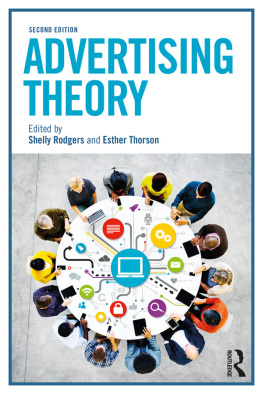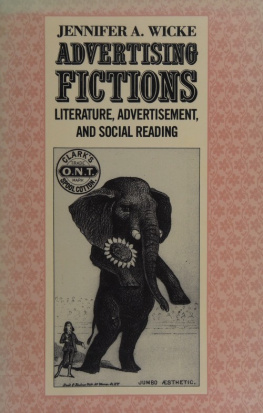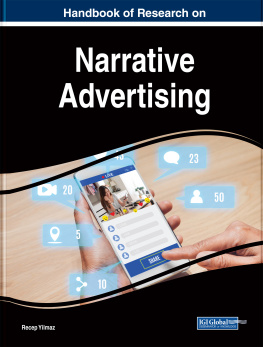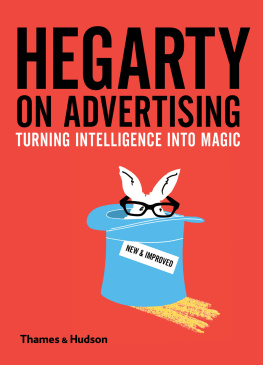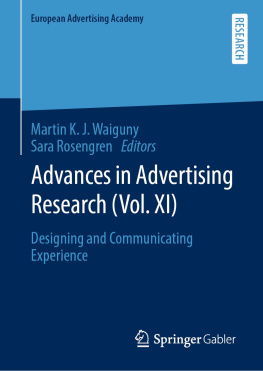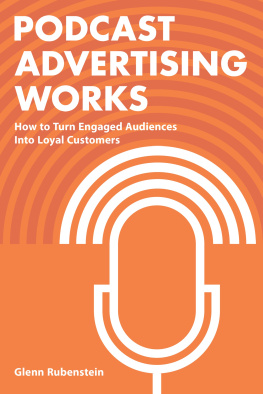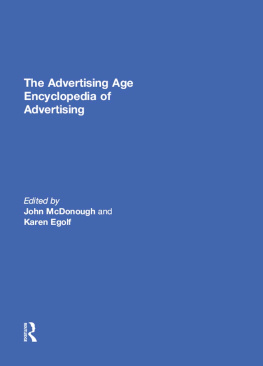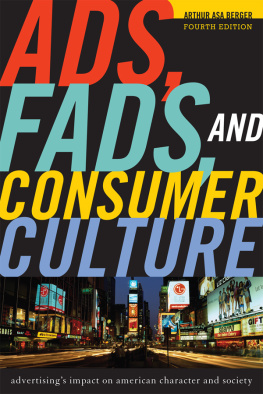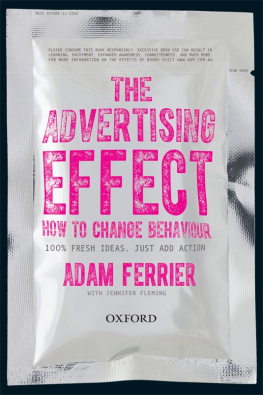
Advertising Theory
Advertising Theory provides detailed and current explorations of key theories in the advertising discipline. The volume gives a working knowledge of the primary theoretical approaches of advertising, offering a comprehensive synthesis of the vast literature in the area. Editors Shelly Rodgers and Esther Thorson have developed this volume as a forum in which to compare, contrast, and evaluate advertising theories in a comprehensive and structured presentation. With new chapters on forms of advertising, theories, and concepts, and an emphasis on the role of new technology, this new edition is uniquely positioned to provide detailed overviews of advertising theory.
Utilizing McGuires persuasion matrix as the structural model for each chapter, the text offers a wider lens through which to view the phenomenon of advertising as it operates within various environments. Within each area of advertising theoryand across advertising contextsboth traditional and non-traditional approaches are addressed, including electronic word-of-mouth advertising, user-generated advertising, and social media advertising contexts.
This new edition includes a balance of theory and practice that will help provide a working knowledge of the primary theoretical approaches and will help readers synthesize the vast literature on advertising with an in-depth understanding of practical case studies and examples within every chapter. It also looks at mobile advertising in a broader context beyond the classroom and explores new areas such as native advertising, political advertising, mobile advertising, and digital video gaming.
Shelly Rodgers is Professor of Strategic Communication and William T. Kemper Fellow, Missouri School of Journalism. Supported by more than $25 million in federal and state grants, her research includes psychological processing of digital health advertising. She is a Past President of the American Academy of Advertising (2010).
Esther Thorson is Professor of Journalism and Associate Dean for Graduate Studies, Michigan State University. She publishes extensively on advertising message effects and is one of the most cited scholars in advertising. She is a Fellow of the American Academy of Advertising and International Communication Association.
Routledge Communication Series
Jennings Bryant/Dolf Zillmann, Series Editors
Selected titles include:
The Business of Sports
Off the Field, in the Office, on the News, 3rd Edition
Mark Conrad
Advertising and Public Relations Law, 3rd Edition
Carmen Maye, Roy L. Moore, and Erik L. Collins
Applied Organizational Communication
Theory and Practice in a Global Environment, 4th Edition
Thomas E. Harris and Mark D. Nelson
Public Relations and Social Theory
Key Figures, Concepts and Developments, 2nd Edition
Edited by yvind Ihlen and Magnus Fredriksson
Family Communication, 3rd Edition
Chris Segrin and Jeanne Flora
Advertising Theory, 2nd Edition
Edited by Shelley Rodgers and Esther Thorson
An Integrated Approach to Communication Theory and Research, 3rd Edition
Edited by Don W. Stacks, Michael B. Salwen, and Kristen C. Eichhorn
Analyzing Media Messages, 4th Edition
Using Quantitative Content Analysis in Research
Daniel Riffe, Stephen Lacy, Brendan R. Watson, and Frederick Fico
For a full list of titles please visit: www.routledge.com/Routledge-Communication-Series/book-series/RCS .
Advertising Theory
Second Edition
Edited by Shelly Rodgers and
Esther Thorson

Second edition published 2019
by Routledge
52 Vanderbilt Avenue, New York, NY 10017
and by Routledge
2 Park Square, Milton Park, Abingdon, Oxon, OX14 4RN
Routledge is an imprint of the Taylor & Francis Group, an informa business
2019 Taylor and Francis
The right of the Shelly Rodgers and Esther Thorson to be identified as the authors of the editorial material, and of the authors for their individual chapters, has been asserted in accordance with sections 77 and 78 of the Copyright, Designs and Patents Act 1988.
All rights reserved. No part of this book may be reprinted or reproduced or utilised in any form or by any electronic, mechanical, or other means, now known or hereafter invented, including photocopying and recording, or in any information storage or retrieval system, without permission in writing from the publishers.
Trademark notice : Product or corporate names may be trademarks or registered trademarks, and are used only for identification and explanation without intent to infringe.
First edition published by Routledge 2012
British Library Cataloguing-in-Publication Data
A catalogue record for this book is available from the British Library
Library of Congress Cataloging-in-Publication Data
Names: Rodgers, Shelly (Shelly Lannette), 1965- editor. | Thorson, Esther, editor.
Title: Advertising theory / edited by Shelly Rodgers and Esther Thorson.
Description: Second edition. | Abingdon, Oxon ; New York, NY : Routledge, 2019. | Series: Routledge communication series |
Identifiers: LCCN 2018051401 (print) | LCCN 2018057196 (ebook) | ISBN 9781351208314 () | ISBN 9780815382492 (hardback) | ISBN 9780815382508 (pbk.) | ISBN 9781351208314 (ebk)
Subjects: LCSH: Advertising.
Classification: LCC HF5821 (ebook) | LCC HF5821 .A384 2019 (print) | DDC 659.101dc23
LC record available at https://lccn.loc.gov/2018051401
ISBN: 978-0-8153-8249-2 (hbk)
ISBN: 978-0-8153-8250-8 (pbk)
ISBN: 978-1-351-20831-4 (ebk)
Typeset in Sabon
by Swales & Willis Ltd, Exeter, Devon, UK
IN MEMORY
In memory of Dr. Sheila Sasser. Her passion for advertising and the impact of her research on creativity in advertising will long live in the minds of all who knew her and for generations to come.
EDITOR DEDICATIONS
Dedicated to my one and only, Jon.
Shelly
Dedicated to my four grandchildren: Madeline (who has already announced she wants to be an author), Dominic, Will, and Lilliana.
Esther
Advertising has been around for centuries with the most primitive forms reflected in Egypt when steel was used to create outdoor advertising. In 1836, the French newspaper La Presse was the first to offer paid advertising to help subsidize the newspapers costs. This was probably one of earliest forms of true mass media, and advertising has grown over the years to become an integral part of both our economy and our culture.
To understand the nature of advertising, early advertising scholars began borrowing theories from other disciplines to frame and answer advertising research questions. As the nature and forms of advertising continue to shift over the years, so too do the theories used to understand advertising problems. While the evolution of digital advertising has left practitioners with a range of new creative forms of communication for marketing their goods and services, scholars are left with a plethora of new questions about what works and what doesnt in this new age of advertising.
It is normal and practical to revisit theories and test them in new environments and see how they inform advertising. It is also important to examine new theories and assess their relevance in the current and ever-changing advertising environment.
In this second edition of Advertising Theory , leading scholars Shelly Rodgers and Esther Thorson, once again, gather a group of renowned researchers in advertising to provide a range of critical perspectives and diverse topics in advertising theory that include new directions and new approaches in advertising. The chapter authors are among the most knowledgeable and respected in their fields and include past and current editors of the leading advertising journals.
Next page
